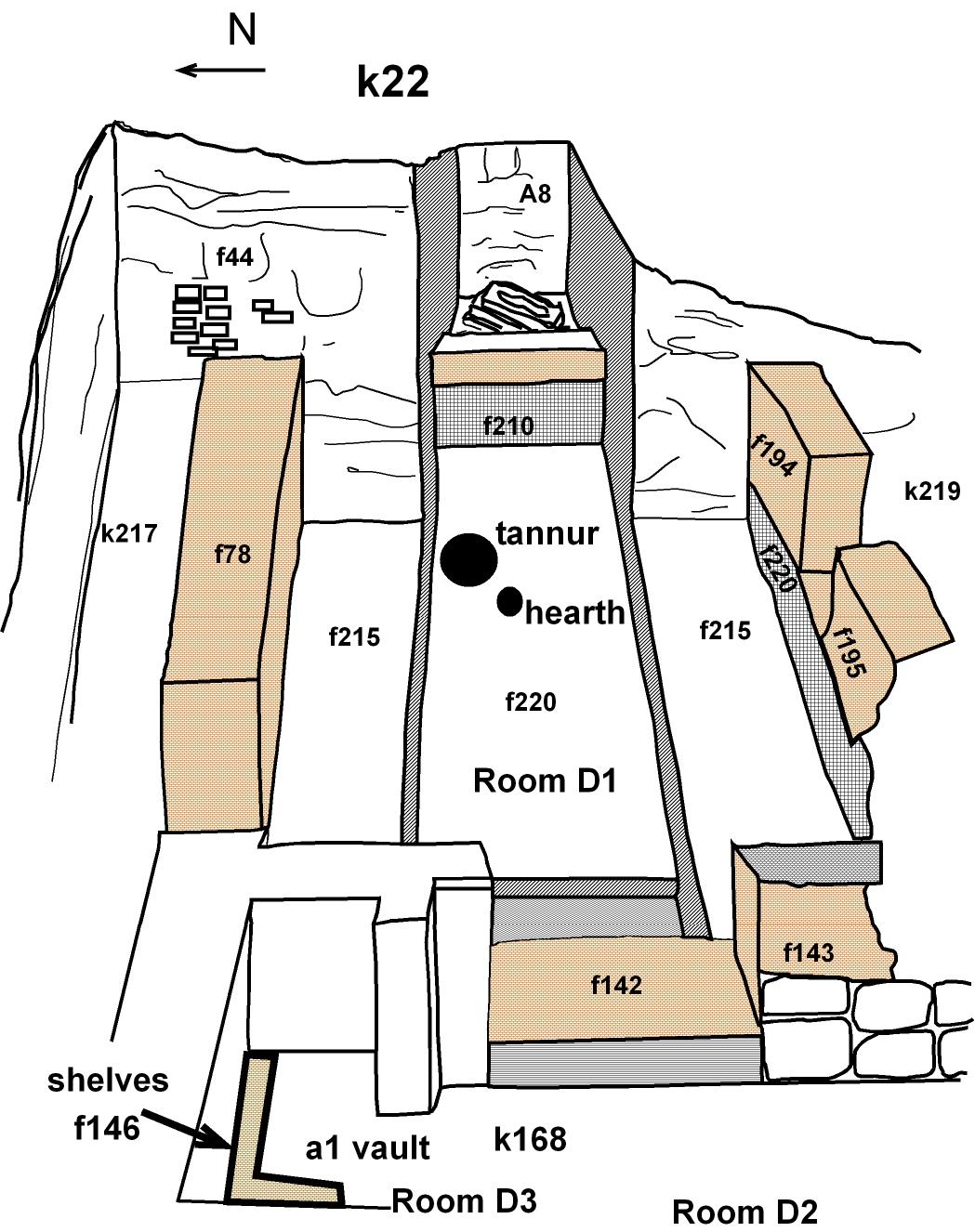Back to top: Phase 2b9AAH within unit A6
Stratigraphy
The phase 2b9AAH continued to reveal walls dating back to the Akkadian period, a time during which the site was under the control of King Tupkish. This conclusion was supported by architectural characteristics, particularly the scale of construction and the clear use of mud-brick walls built on stone foundations. Several walls were uncovered, especially in the kitchen area, including: f196, f123, f133, f132, f143, f192, f199, f200, f201, and f210. Together, these walls formed a significant part of the service quarter. The associated soil varied in color, ranging from gray to reddish or pinkish-brown, and contained traces of carbonized material, along with pottery sherds and bones. The uniformity in brick size and color, the presence of a gypsum-coated platform, and a tannur all reinforced the significance of this unit as an important and functional sector within the royal palace, offering valuable insight into the architectural and administrative organization of the Akkadian period.
Back to top: Phase 2b9AAH within unit A6
Objects
In addition to the exposure of walls, pottery fragments, and seal impressions, such as seal i105, several kitchen-related installations were uncovered. These included a tannur f356 and a hearth f376. Mud-brick shelves f146 were also found, extending along the northern and western walls inside Vault a1. Moreover, a threshold f142 was discovered, functioning as a barrier between rooms D1 and D2. An additional architectural feature, an entrance a31, was also identified during excavation.

Back to top: Phase 2b9AAH within unit A6